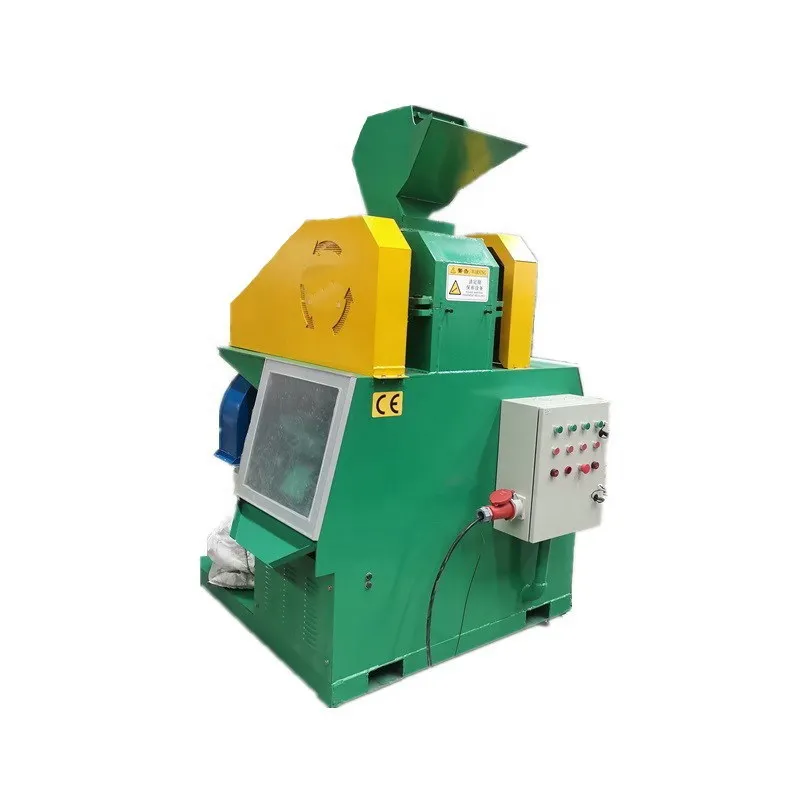Shreddable steel scrap, often perceived as the lifeline of the recycling industry, plays a crucial role in both environmental sustainability and economic efficiency. While many understand the broad concept of metal recycling, fewer grasp the specific nature and value of shreddable steel scrap within this ecosystem.

Shreddable steel scrap is defined by its physical characteristics and its potential for transformation in metal recycling processes. As the name suggests, this type of scrap is specifically intended for shredding machines, which are designed to break down large volumes of metal into smaller, more manageable pieces. This not only aids in efficient transportation but also prepares the metal for subsequent processing stages, such as melting and refining.
Key Characteristics of Shreddable Steel Scrap

The defining feature of shreddable steel scrap is its size and density, which are optimized for the shredding process. Typical items that fall into this category include end-of-life vehicles, household appliances, steel beams, and structural components. The intrinsic value of these materials lies in their steel content, amalgamated with a variety of secondary materials like plastics or rubber, which are stripped away during processing.
Steel recyclers prize shreddable scrap due to its high yield potential. Unlike mixed or contaminated metals, shreddable steel scrap provides a more predictable source of raw material, ensuring efficient production and reducing waste. The capability to consistently deliver high-quality steel scrap is vital for manufacturers aiming to meet industry standards and minimize production costs.
Environmental and Economic Impacts
From an environmental perspective, shreddable steel scrap recycling is instrumental in reducing landfill use and conserving natural resources. By diverting substantial quantities of steel waste from landfills, recycling reduces greenhouse gas emissions and diminishes the need for virgin material extraction, a process that can be both energy-intensive and ecologically disruptive.
Economically,
the recycling of shreddable steel scrap offers substantial benefits. It significantly lowers the cost of raw materials for steel production, as recycled scrap can substitute a major portion of virgin ore. This substitution reduces production costs, thereby enhancing competitiveness in the global steel market. Moreover, the recycling industry generates employment and creates economic opportunities in areas such as collection, transportation, and processing of scrap materials.
what is shreddable steel scrap
Innovative Technologies in Steel Scrap Shredding
Advancements in shredding technology have further augmented the value of shreddable steel scrap. Modern shredders boast increased energy efficiency, enhanced precision, and higher throughput capabilities. Equipped with powerful magnetic separators and size consoles, these machines ensure optimal recovery of metallic materials while minimizing residue and contaminant levels.
Furthermore, emerging trends in artificial intelligence and machine learning offer significant potential in optimizing shredding operations. Sophisticated algorithms can predict maintenance needs, enhance machine performance, and streamline logistics, ensuring that recycling facilities operate with maximum efficiency and minimal downtime.
The Role of Policy and Regulation
Global regulatory frameworks and policy initiatives have also shaped the shreddable steel scrap market. Many governments enforce strict regulations regarding the recycling and disposal of metal waste, incentivizing businesses to adopt sustainable practices. These policies not only aim to enhance environmental protection but also encourage investments in recycling infrastructure and technological innovation.
Additionally, stringent quality standards for recycled steel products have encouraged the industry to refine recycling processes to produce materials that meet or exceed virgin steel characteristics. This emphasis on quality assurance fosters a competitive market dynamic, driving continuous improvement and modernization within the industry.
Conclusion
In summary, the significance of shreddable steel scrap in the recycling industry cannot be overstated. Its role in minimizing environmental impact, reducing manufacturing costs, and supporting economic development underscores its importance. Through technological advancements and supportive policy frameworks, shreddable steel scrap will continue to be a pivotal resource in shaping a sustainable future for the steel and recycling industries. As global demand for sustainable products rises, the industry’s emphasis on efficiency and quality in processing shreddable steel scrap will play a crucial role in meeting this demand, ensuring resource conservation and environmental stewardship.


